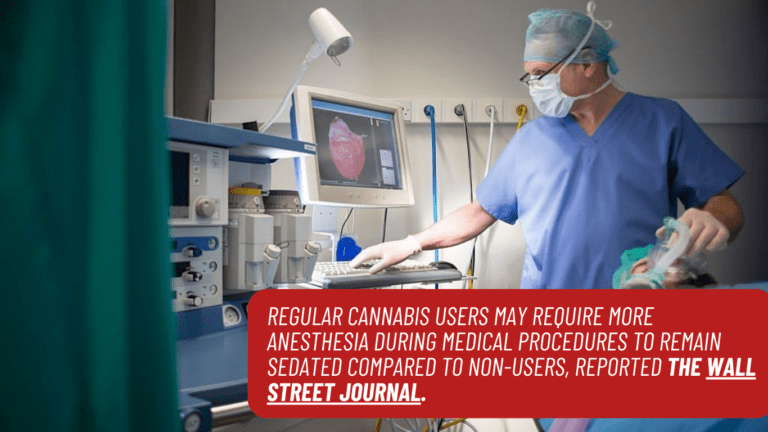Anesthesia Needs for Cannabis Users: Study Highlights Potential Impact on Medical Practices

As cannabis legalization spreads across the globe, the medical community is grappling with understanding its effects, particularly during medical procedures requiring anesthesia. While hospitals routinely inquire about alcohol consumption, cannabis use often goes unaddressed in pre-surgical assessments, despite its potential to affect anesthesia requirements.
Research suggests that regular cannabis users may need higher doses of anesthesia to achieve and maintain sedation. Julius Hyatt, an orthodontic surgeon, observed that many of his cannabis-using patients required significantly more anesthesia than non-users. Some even needed two to three times the standard dosage of Propofol.
Recognizing the importance of addressing cannabis use in pre-surgical assessments, The American Society of Regional Anesthesia and Pain Medicine issued guidelines recommending screening and questioning patients about their cannabis habits. However, specific dosing adjustments remain unclear due to ongoing research into how cannabis interacts with anesthesia.
Studies have shown that cannabis use can impact the metabolism of drugs like Propofol, potentially prolonging the sedation process. The method of cannabis consumption also plays a role, with edibles processed by the liver having a more prolonged effect compared to inhaled forms.
Moreover, cannabis use post-surgery may interfere with pain management, leading to increased opioid consumption among users. Hospitals are increasingly incorporating questions about cannabis use into patient assessments, with some adjusting anesthesia and pain medication dosages accordingly.
Jeffrey Galinkin, Chairman of Perioperative and Anesthesia Services, emphasizes the importance of patients disclosing their cannabis use, as it directly influences their treatment plan. By fostering open communication, healthcare providers can ensure patient safety and optimize anesthesia outcomes during medical procedures.











